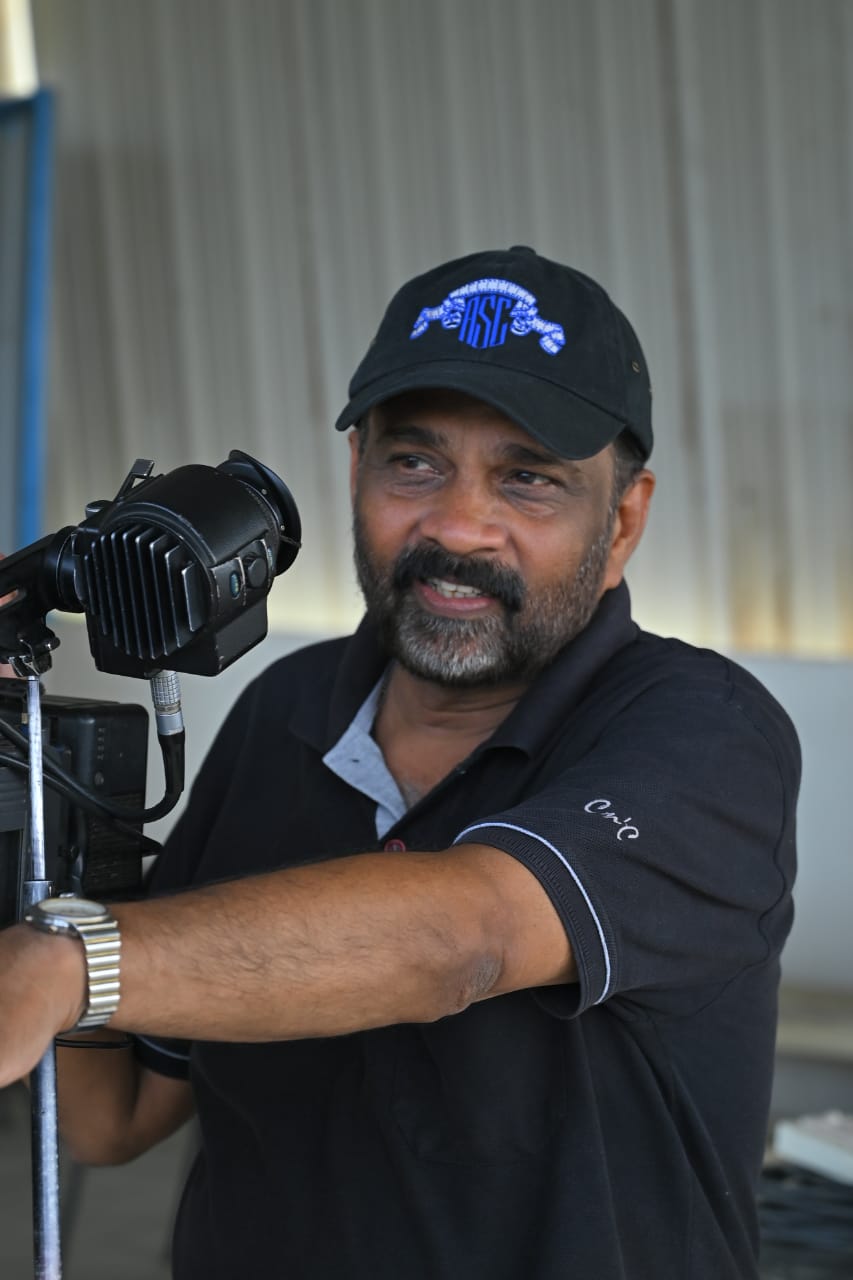
In conversation : A.Ramesh Kumar DF tech !
Feb 13 2024
A. Ramesh Kumar: A Visionary Cinematographer Who Revolutionized Tamil Cinema

A. Ramesh Kumar is not just a name in Tamil cinema, it’s a synonym for visual innovation and groundbreaking techniques. A veteran cinematographer with a keen eye for detail, Ramesh Kumar has not only revolutionized the cinemascope format in Tamil films but has also set a high standard for visuals in the television industry.
Ramesh Kumar’s journey began right after graduating from the prestigious Film Institute, where he made his debut with the critically acclaimed “Oomai Vizhigal.” This debut, labeled “a film by film students,” challenged conventions and paved the way for a new generation of filmmakers. His commercial success further solidified the belief that film students could excel in mainstream cinema.
Beyond the big screen, Ramesh Kumar has made his mark in the television industry as well. His high standards for visuals have elevated the quality of serials, setting a benchmark for others to follow.
A. Ramesh Kumar is more than just a cinematographer; he is a visionary who has pushed the boundaries of his craft and left an indelible mark on Tamil cinema. His dedication to his art and his passion for storytelling continue to inspire generations of filmmakers and cinephiles alike.
Here A.Ramesh Kumar DF tech shares his visual Journey with SICA.
What inspired your initial interest in cinematography?
After finishing my PUC, I faced uncertainty about my future direction. Upon my brother A Suresh Kumar’s recommendation, I applied to join the Madras Film Institute, where PC Sreeram, a close friend of my brother, was studying Cinematography. Seeking guidance, my father, Tiruchi K Arunachalam, a Still Photographer, turned to Mr. Vincent Master. During our meeting,. Vincent Master challenged me with a series of 100 questions, to which I couldn’t provide a single answer. Motivated to find my own answers, I explored my father’s book cupboard, igniting a profound passion for learning Cinematography.
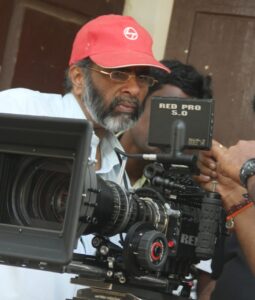
(Above image- Cinematographer Suresh Kumar)
Did any particular films or cinematographers serve as inspiration for you?
Inspiration for me stemmed from world-class filmmakers and cinematographers, including notable figures like Balu Mahendra and Nivas, within the Indian film industry.
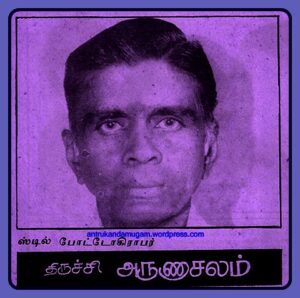
Could you share some of your most memorable moments with your father?
Growing up, my father’s role as a still photographer sparked my curiosity about his work. We had a darkroom for developing and printing negatives, where my father would create impressive prints, some as large as 3ft by 6ft. Witnessing the images gradually appear in the red light of the darkroom was an unforgettable experience for me.
Your father, Tiruchy K Arunachalam, emerged as one of the renowned still photographers in the Tamil Film Industry. Could you provide more details about his early professional career?
While in Trichy, my father obtained the contact of a distributor from Ajantha Pictures. He accompanied him to Venus Pictures, where he was introduced to Krishnamurthy. During this encounter, he seized the opportunity to work as a still photographer for the film ‘Amardeepam’, then in production. As it marked his debut in the industry, senior still photographer Nagaraja Rao was also assigned to work alongside him. Following the completion of each scene, Sivaji Ganesan graciously posed for separate still pictures for publicity, allowing both my father and Nagaraja Rao to capture the shots. Impressed by the images captured by my father, Nagaraja Rao generously suggested that my father, now nicknamed Aana Runa by the legendary Sivaji Ganesan himself, continue as the sole cameraman for the project. Henceforth, my father, known as Anaruna, continued his work as a still photographer for films directed by Sridhar and various other projects.
What advantages does film education offer?
Attending a film institute cultivates collaboration, where working alongside peers enhances teamwork skills and fosters industry relationships. Engaging in film discussions, idea sharing, and collaborative projects enriches the learning journey, preparing individuals for the collaborative nature of filmmaking.
What were your initial experiences when you entered the film industry?
Entering the film industry was a straightforward journey for me; I didn’t actively seek it out. My debut film, “Oomai Vizhighal,” came about naturally, as I collaborated with my classmates.

Could you provide insights into the challenges you faced and the rewards you experienced when reintroducing CinemaScope to Tamil cinema with “Oomai Vizhigal”?
Shooting in Cinemascope posed no significant challenge for me; instead, I viewed the project as an extension of my practical training at the Film Institute, where I learned to execute it flawlessly.

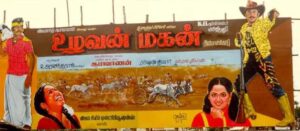
Can you provide details about the planning and execution process for the innovative rekla race sequence in “Uzhavan Magan”?
The successful execution of the innovative rekla race sequence in “Uzhavan Magan” was facilitated by the coordinated efforts of 9 Cinemascope cameras, a 500-foot trolley, and an 80-foot-high goda to simulate a helicopter shot. This smooth operation was made possible by the expertise of my operative cameramen, graduates of a film institute, and my lightman from the JMC outdoor unit. Trusting the competence of my team members was essential for achieving outstanding results. Moreover, thorough briefings and clear communication in technical terms about the upcoming shoot were integral to the process.
What drove your decision to utilize a Black model and backdrop in an advertisement to accentuate the jewellery, and how did the industry and audience respond to this daring choice?
My invitation to shoot the Lalitha Jewellery adfilm stemmed from the success of “Oomai Vizhigal,” where the striking black visuals captured audiences’ attention. To enhance the advertisement’s focus on gold, I opted for a black background and featured a striking black model. A surprise element was incorporated, as the black statue unexpectedly comes to life with its eyes opening, accompanied by a haunting hum in the background.
What specific qualities do you seek in potential cinematographers as you mentor and cultivate successful DPs from among your assistants?
A strong drive for excellence and a deep commitment to achieving perfection are essential qualities I seek in my assistant cameramen.
What are the key lessons you’ve gleaned from your career that you endeavor to pass on to your students and mentees?
A crucial lesson is to continuously cultivate learning, creativity, and imagination. Instead of waiting for opportunities, actively seek them by acquiring knowledge that empowers you. Understand that while opportunities may be fleeting, knowledge remains an enduring asset.
What transformations have you observed in the landscape of cinematography since your early career?
These days, it’s rare to come across specular lighting in films; instead, the majority of visuals feature soft lighting from large sources. Today, cinematography demands creativity that leaves a lasting impression on the audience’s mind, ensuring they remember a shot by a cinematographer.

Could you share some of your most cherished memories from your career?
Each day of filming “Oomai Vizhigal” is filled with cherished memories, characterized by ongoing learning, experimentation, and in-depth discussions with my team. In this film, I explored the use of color psychology for the characters, employing cool blue tones with high-contrast lighting for the villain and vibrant yellow for the press people. This juxtaposition highlighted their contrasting lifestyles, contrasting the challenges faced by the press with the joyful life of the newlyweds. My inspiration for this bold experiment stemmed from my readings in the American Cinematographer magazine at the American Consulate library.
What film stock, ASA, and exposure settings did you use for most of the night scenes in “Oomai Vizhigal”?
For “Oomai Vizhigal,” I selected Kodak 5247 film stock with a sensitivity of 125 ASA and incorporated a Cinemascope adapter, enabling a lens aperture of f/5.6.
What guidance would you offer to aspiring cinematographers in the present day?
Aspiring cinematographers, seize the moment! Don’t wait for perfect conditions; instead, actively pursue your passion and consistently hone your skills whenever the chance presents itself. Always remember to “Make Hay while Sunshines.”
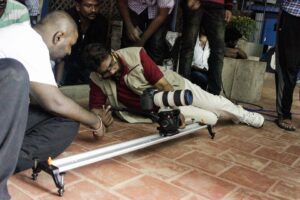
Which projects do you hold in particular pride in your career?
The prefix “A” before my name, followed by DFTech,” has been instrumental in shaping my identity and contributing to my success in the field.
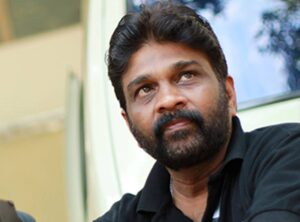
Article by
CJ Rajkumar
Author/Cinematographer
